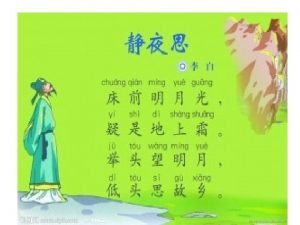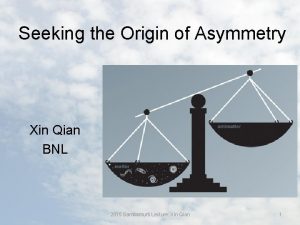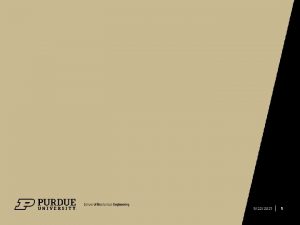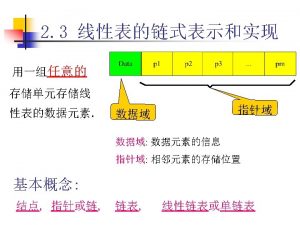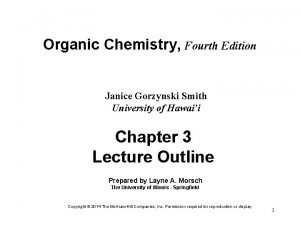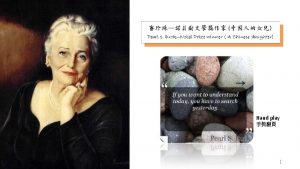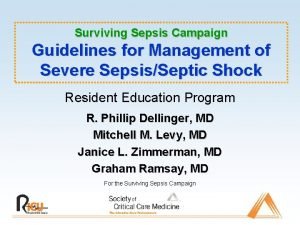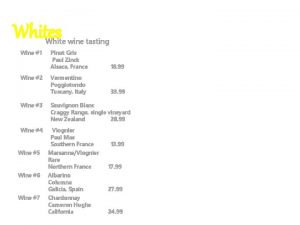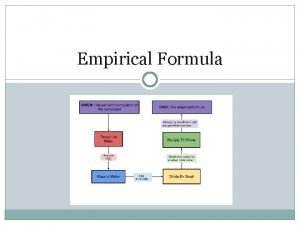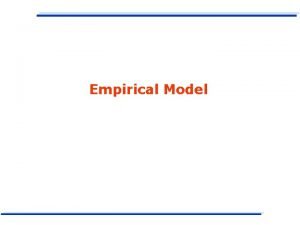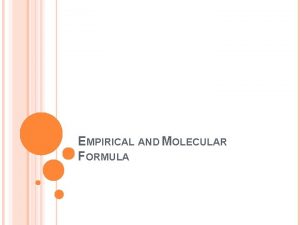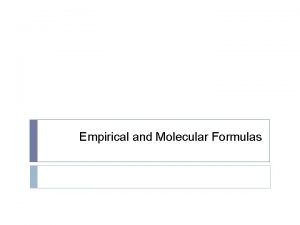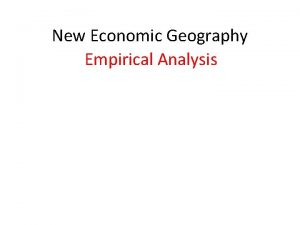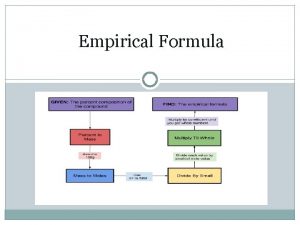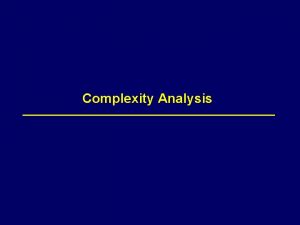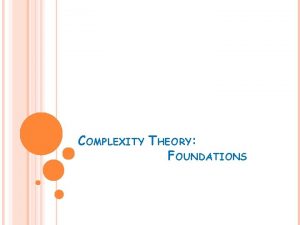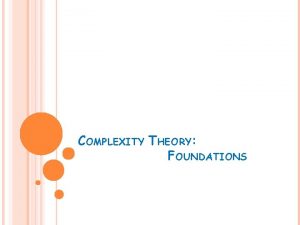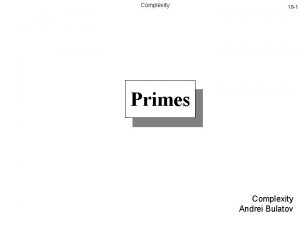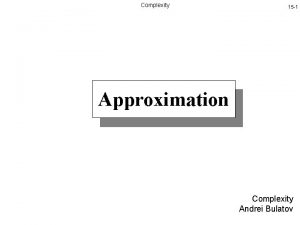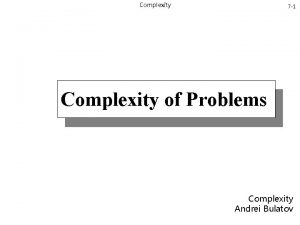Wine Complexity An Empirical Investigation Qian Janice Wang





































- Slides: 37

Wine Complexity: An Empirical Investigation Qian Janice Wang Crossmodal Research Laboratory Department of Experimental Psychology University of Oxford June 12 2018

Crossmodal Research Laboratory

Crossmodal Research Laboratory

Oxford University Blind Tasting Society

Summary • Just what do we mean by wine complexity? • Are blended wines more complex than single varietals? • Are people willing to pay for it? Evaluating Methods of Aesthetic Enquiry across Disciplines

WINE COMPLEXITY: WHAT IS IT?

“The single greatest standard used in assessing the quality of a wine is complexity. The more times you can return to a glass of wine and find something different in it—in the bouquet, in the taste—the more complex the wine. The very greatest wines are not so much overpowering as they are seemingly limitless. ” - Matt Kramer, Wine Spectator, 2012.

What do we mean by complexity? • Physical/chemical complexity is in the wine • Perceived/inferred complexity is in the taster

What do we mean by complexity? • Physical/chemical complexity is in the wine – structural – number of different molecules

What do we mean by complexity? • Physical/chemical complexity is in the wine – Structural Spence & Wang (in press) – Number of different molecules On the meaning(s) of complexity in the chemical senses. Chemical Senses • Perceived/inferred complexity is in the taster – Number of components – Temporal evolution (in the mouth, in the glass) – Integrated percept

Influence of expertise Parr et al. , (2011). Representation of complexity in wine: Influence of expertise. FQ&P

How the WSET approaches complexity Parr et al. , (2011) FQ&P

Questions • Can blending increase perceived complexity? – Singleton & Ough (1962)

Questions • Is complexity worth paying for?

STUDY – WINE BLENDING AND COMPLEXITY

Wines • 3 single varietal wines – Cabernet Sauvignon $24. 99 – Merlot $21. 99 – Cabernet Franc $21. 99 • 3 50 -50 blends

Participants • 87 people recruited from Oxford (38 male, 49 female) • Age distribution (18 -70, Mean 29. 06, SD 11. 71) • Expertise distribution: 41 beginners, 30 intermediates, 16 experts


REDCURRANT, CRANBERRY, RASPBERRY, STRAWBERRY, RED CHERRY, RED PLUM BLACKCURRANT, BLACKBERRY, BRAMBLE, BLACK CHERRY, BLACK PLUM FIG, PRUNE, RAISIN GREEN BELL PEPPER, TOMATO, BLACKCURRANT LEAF, BLACK OLIVE, GREEN OLIVE EUCALYPTUS, MINT, MEDICINAL, LAVENDER, FENNEL, DILL BLACK PEPPER, WHITE PEPPER, LIQUORICE, JUNIPER Final question: Which of the wines are blends? BUTTER, CREAM, YOGHURT VANILLA, TOAST, CEDAR, CHARRED WOOD, SMOKE, CLOVES, NUTMEG ALMOND, COCONUT, CHOCOLATE, COFFEE LEATHER, MEATY, FARMYARD VEGETAL, WET LEAVES, FOREST FLOOR, GAME, SAVOURY, TOBACCO EARTH, PETROL, RUBBER Wine No. Flavours (Please pick 5 from the list) Evaluation (1= not at all; 9 = very much) Quality 1☐ 1 Liking: Quality (1 -20): 2 Familiarity: 3 Complexity: 4 Flavour Intensity: 5 Willingness to pay for a 750 m. L bottle (£):

CAN PEOPLE TELL BLENDS FROM SINGLE-VARIETAL WINES?

Blend vs. Single-Varietal • All expertise levels together: No χ2(1)=3. 11, p =. 08 Single Varietal Wines Total Yes blend 40% Not blend 60% 50 -50 Blended Wines Total Not blend 52% Yes blend 48%

• Yes for beginners and intermediates! Single-Varietal Beginner (N=41) Intermediate (N=30) Advanced (N=16) Not blend 60% Not blend 59% Not blend 60% 50 -50 Blends Yes blend 40% Not blend 42% Yes blend 41% Not blend 41% Yes blend 40% Not blend 60% Yes blend 58% χ2(1)=7. 88, p =. 005 Yes blend 59% χ2(1)=5. 69, p =. 02 Yes blend 40% χ2(1)=0, p = 1

So how do people decide if a wine is a blend? • If it seems unfamiliar!

DO 50 -50 BLENDS INCREASE PERCEIVED QUALITY AND COMPLEXITY?

Blends Difference in ratings? • MANOVA: Blend (blend, non-blend) x Expertise level (beginner, intermediate, expert) – Complexity – Intensity – Liking – Familiarity – Quality – Willingness to pay

Numerical analysis: Differences in ratings? • No effect of blend vs. single-varietal • But, significant effect of expertise level Expertise Complexity Liking (1 -9) Intensity (1 - Familiarity (1 Quality (1 - Willingness level Novice (1 -9) 4. 95 (. 12) 5. 01 (. 13) 9) 5. 43 (. 11) -9) 4. 55 (. 13) 20) 10. 26 (. 26) to pay (£) 8. 27 (. 27) a a a 5. 04 (. 15) 5. 67 (. 13) 4. 90 (. 15) 10. 19 (. 30) 9. 24 (. 31) a a ab a a a 5. 45 (. 18) 5. 50 (. 21) 6. 20 (. 18) 6. 30 (. 20) 12. 38 (. 41) 12. 19 (. 43) a a b b Intermediate 5. 24 (. 14) Expert

HOW DO PEOPLE PERCEIVE COMPLEXITY?

A Model for Complexity β t-Stat. Quality . 35 7. 62 ** Intensity . 31 9. 93 ** Liking . 19 4. 38 ** Age . 12 3. 91 ** Wine Order . 11 3. 86 ** Gender (1=male, 2=female) . 07 2. 28 * Willingness to pay . 05 1. 19 Expertise -. 04 -1. 22 Familiarity . 02 . 52 Adjusted R 2 . 58 Num. Obs. 518

Linguistic analysis • Are certain flavour descriptors associated with greater complexity? – Naïve Bayes classifier (Python nltk library) – Divided all tasting notes into 2 complexity groups, low or high (median = 6/9) – Find which descriptor might be most informative (i. e. used for tasting notes belonging to one group or another)

So…where does complexity come from? • Complexity comes from winemaking – oak! Flavour descriptor Likelihood Ratio Coconut Complex: Simple 4. 3 : 1 Farmyard Simple: Complex 2. 9 : 1 Game Simple: Complex 2. 7 : 1 Toast Complex: Simple 2. 5 : 1 Vanilla Complex: Simple 2. 1 : 1 Butter Complex: Simple 1. 9 : 1 Vegetal Simple: Complex 1. 8 : 1 … … …

ARE PEOPLE WILLING TO PAY FOR COMPLEXITY?

Is complexity worth paying for? • Yes it is? Complexity Liking Intensity Familiarity Quality Willingness to pay Pearson correlation . 57 . 52 . 29 . 66 . 50 Sig. <. 0005

But not after controlling for other factors…

A Model of Willingness to Pay β t-Stat. Quality . 43 8. 83 ** Wine expertise . 19 5. 23 ** Liking . 20 4. 21 ** Age . 06 1. 77 Complexity . 06 1. 19 Familiarity . 04 . 97 Intensity . 02 . 55 Wine order -. 003 -. 10 Gender (0=male, 1=female) . 003 . 09 Adjusted R 2 . 50 Num. Obs. 518

Informative words – willingness to pay • Expensive wines taste like vanilla? Flavour descriptor Likelihood Ratio Yoghurt Cheap: Expensive 4. 3 : 1 Vanilla Expensive: Cheap 2. 9 : 1 Petrol Cheap: Expensive 2. 7 : 1 Wet leaves Cheap: Expensive 2. 5 : 1 Butter Expensive: Cheap 2. 1 : 1 Chocolate Expensive: Cheap 2. 9 : 1 … … …

Summary • 50 -50 versus single varietal: not much difference – Experts rate wines to be better quality and willing to pay more • Complexity predicted by – Quality, intensity, liking – Age, gender – Order of wines tasted • Complexity and willingness to pay associated with oak flavours • No correlation between complexity and willingness to pay – instead driven by quality, expertise, and liking

Thank you for your attention! https: //www. 1843 magazine. com/features/supertasters-among-the-dreaming-spires
 Qian janice wang
Qian janice wang Wang qian av
Wang qian av Time space complexity
Time space complexity Cmpe 252
Cmpe 252 Macroeconomics
Macroeconomics Chuang qian ming yue guang li bai
Chuang qian ming yue guang li bai Wirecell
Wirecell Xin qian bnl
Xin qian bnl Nicole key purdue
Nicole key purdue Qian niu
Qian niu Cmpe 252
Cmpe 252 Junhui qian
Junhui qian Ni lei
Ni lei Cmpe 252
Cmpe 252 Polytomous
Polytomous Qian niu
Qian niu Bill gates
Bill gates Steve qian
Steve qian Harvard catalyst biostatistics
Harvard catalyst biostatistics Sima qian
Sima qian Qian hu kenny yap
Qian hu kenny yap Winnie qian
Winnie qian Elsevier statdx
Elsevier statdx Qian chen ucsc
Qian chen ucsc Niadela
Niadela Zhao qian malaysia
Zhao qian malaysia Fearless janice galloway
Fearless janice galloway Janice hermann
Janice hermann Graded repetitive arm supplementary program
Graded repetitive arm supplementary program Janice smith
Janice smith Janice adair
Janice adair First nations
First nations Youtube jerry seinfeld public speaking
Youtube jerry seinfeld public speaking Pearl buck janice walsh
Pearl buck janice walsh Dr nathalie leung
Dr nathalie leung Janice whatley
Janice whatley Aapi poets
Aapi poets Janice zimmerman md
Janice zimmerman md





